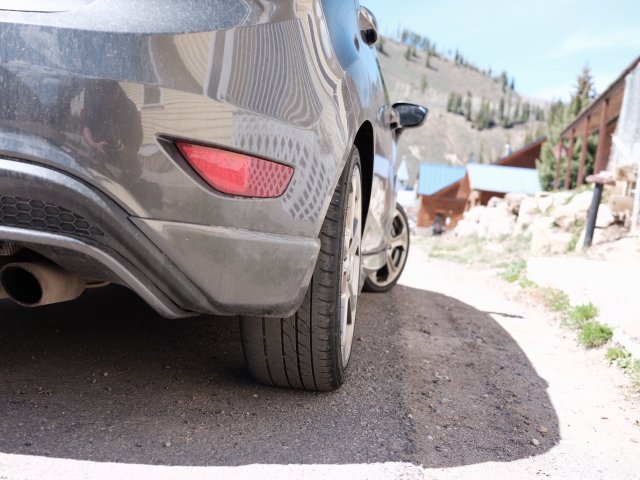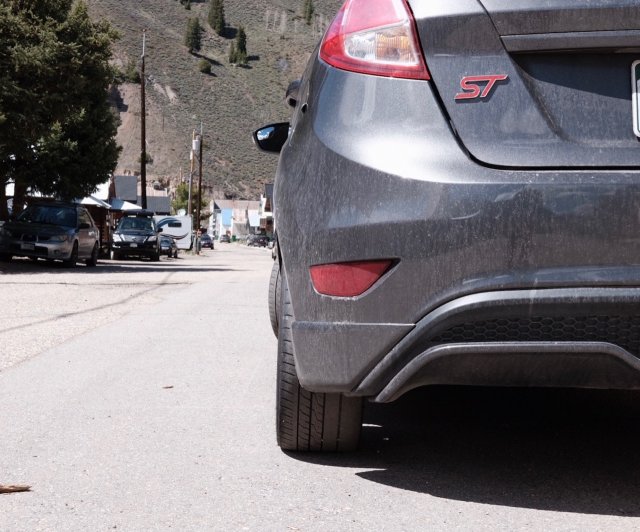New member here. I've been lurking and getting some good info for a while, and I figured I would try to share some...
I recently installed the Wilwood front and rear kit from 2J Racing. The front is a pretty straightforward and seamless installation.
The rear is where things get interesting. The rear kit requires the hubs to be changed, in order to work with the Wilwood brackets. As the kit is made for a standard, drum brake Fiesta, it comes with two new Timken hubs for that car. Pretty much a direct bolt on deal, except for two things: the locating pins on the ST beam don't line up with the pin holes on drum brake hub (remove the pins and they bolt right up, probably not a big deal) and the abs sensor requires a spacer to compensate for the dust shield not being used (not a big deal, as long as you're paying attention...) anyway... after a bit of test fitting and measuring and shimming, the installation looks like it was made for the car.
After bleeding, bedding in the pads, and double checking everything, I went to bed.
Looking at the back of the car in the morning, I noticed a lot of negative camber in the rear. wtf? After scratching my head for a while, I took one the ST hubs and compared it to the extra Timken drum hub that I have on hand (long story) and put them on my surface plate for comparison...
The ST hub face is not parallel with the mounting flange. The upper edge is .095" higher than the lower edge, and the front edge is .025" higher than the rear edge. In the 5.16" distance (hub diameter) this adds up to about 1 degree of positive camber, and about .25 degrees negative toe (toed out) if mounted to a vertical and parallel surface.
Hopefully the pics will help to explain what I'm trying to describe (and feel free to check my math on those angles) This is the right hand ST hub in the pics.
The standard Fiesta hub face is 0 all the way around.
From what I'm seeing, using the (flat) standard Fiesta hub in place of the angled ST hub adds 1 degree of negative camber, and toes in .25 degrees each side, compared to the ST hub on the same beam. From what I found on the internet, the ST target settings should be -.6 something camber, and 0.0 toe? Maybe someone can confirm what the ST numbers should be. If these numbers are correct, my car is at -1.6ish camber, and +.25 toe (toed in)
… After feeling the car out for a couple of days, I had a chance to drive it hard today. The rear sticks a lot better, and I feel like the car doesn't push as much. Does that even make sense? It seems to me that these things don't go together. The lift oversteer is still there, but it is much more subtle. I was worried that the changes would screw up the handling, but now I'm not sure, It might be better. It certainly feels more planted. More "serious" if that makes any sense. These are just my initial observations after my first chance to really hammer the car with the new changes...
I don't have a lot of experience with setting up a car with alignment settings, outside of what I learned from carting, so I would love to hear from some experts on what this "should" be doing to the car.
There doesn't seem to be an easy way to make camber and toe changes in the rear of this car, so I guess for now I'm going to drive it and keep an eye on tire wear and see what happens...
P.S. I looked and haven't found anything on this issue, please let me know if this has been covered somewhere that I missed. Cheers!
PPS: edited for punctuation and math
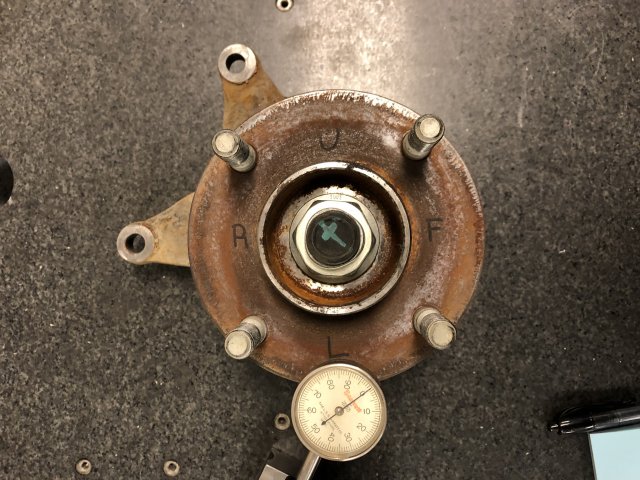
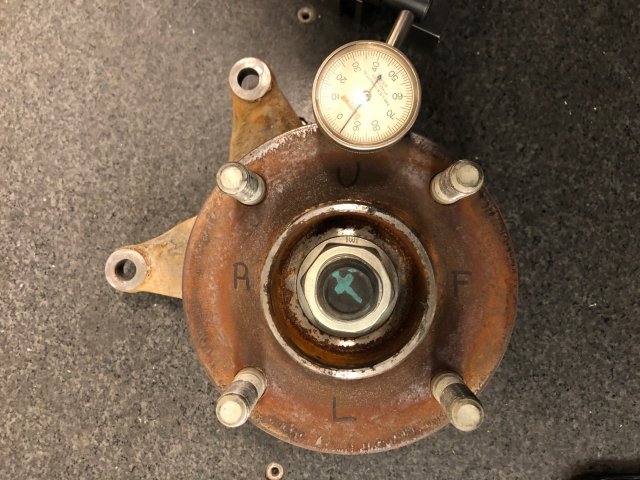
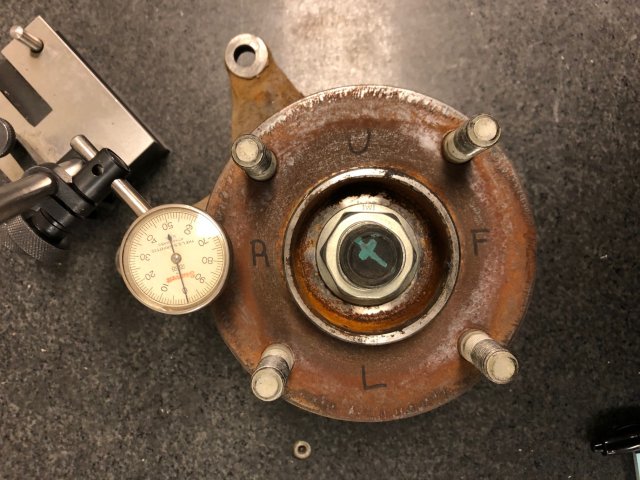
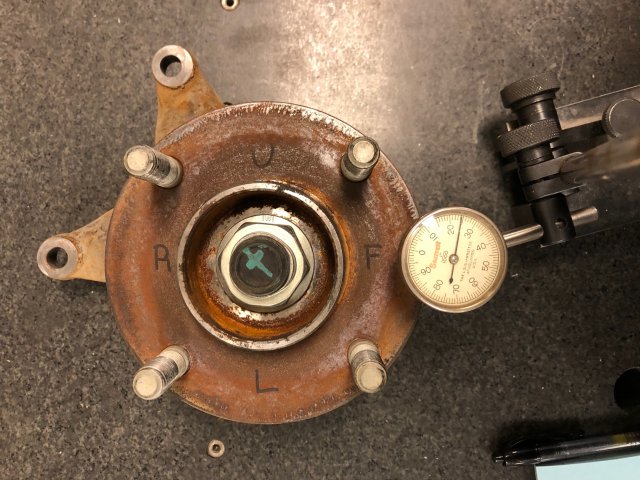
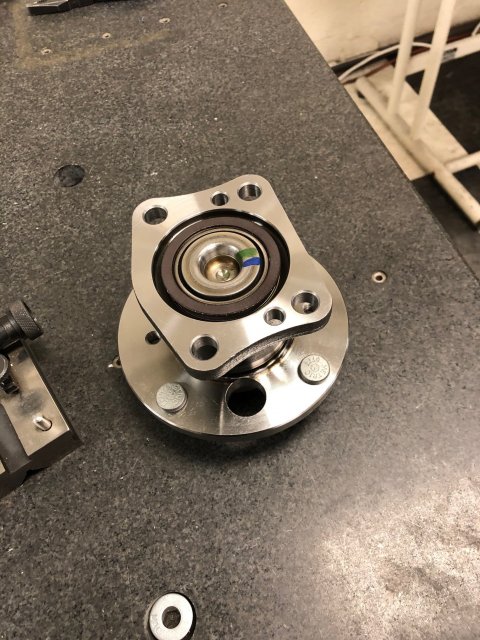
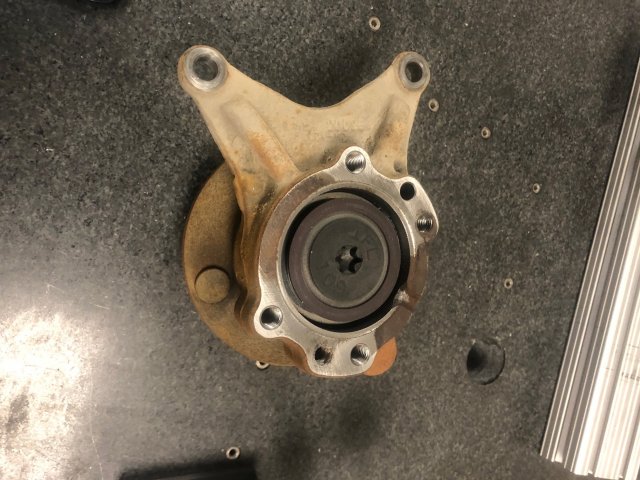
I recently installed the Wilwood front and rear kit from 2J Racing. The front is a pretty straightforward and seamless installation.
The rear is where things get interesting. The rear kit requires the hubs to be changed, in order to work with the Wilwood brackets. As the kit is made for a standard, drum brake Fiesta, it comes with two new Timken hubs for that car. Pretty much a direct bolt on deal, except for two things: the locating pins on the ST beam don't line up with the pin holes on drum brake hub (remove the pins and they bolt right up, probably not a big deal) and the abs sensor requires a spacer to compensate for the dust shield not being used (not a big deal, as long as you're paying attention...) anyway... after a bit of test fitting and measuring and shimming, the installation looks like it was made for the car.
After bleeding, bedding in the pads, and double checking everything, I went to bed.
Looking at the back of the car in the morning, I noticed a lot of negative camber in the rear. wtf? After scratching my head for a while, I took one the ST hubs and compared it to the extra Timken drum hub that I have on hand (long story) and put them on my surface plate for comparison...
The ST hub face is not parallel with the mounting flange. The upper edge is .095" higher than the lower edge, and the front edge is .025" higher than the rear edge. In the 5.16" distance (hub diameter) this adds up to about 1 degree of positive camber, and about .25 degrees negative toe (toed out) if mounted to a vertical and parallel surface.
Hopefully the pics will help to explain what I'm trying to describe (and feel free to check my math on those angles) This is the right hand ST hub in the pics.
The standard Fiesta hub face is 0 all the way around.
From what I'm seeing, using the (flat) standard Fiesta hub in place of the angled ST hub adds 1 degree of negative camber, and toes in .25 degrees each side, compared to the ST hub on the same beam. From what I found on the internet, the ST target settings should be -.6 something camber, and 0.0 toe? Maybe someone can confirm what the ST numbers should be. If these numbers are correct, my car is at -1.6ish camber, and +.25 toe (toed in)
… After feeling the car out for a couple of days, I had a chance to drive it hard today. The rear sticks a lot better, and I feel like the car doesn't push as much. Does that even make sense? It seems to me that these things don't go together. The lift oversteer is still there, but it is much more subtle. I was worried that the changes would screw up the handling, but now I'm not sure, It might be better. It certainly feels more planted. More "serious" if that makes any sense. These are just my initial observations after my first chance to really hammer the car with the new changes...
I don't have a lot of experience with setting up a car with alignment settings, outside of what I learned from carting, so I would love to hear from some experts on what this "should" be doing to the car.
There doesn't seem to be an easy way to make camber and toe changes in the rear of this car, so I guess for now I'm going to drive it and keep an eye on tire wear and see what happens...
P.S. I looked and haven't found anything on this issue, please let me know if this has been covered somewhere that I missed. Cheers!
PPS: edited for punctuation and math






Last edited:

